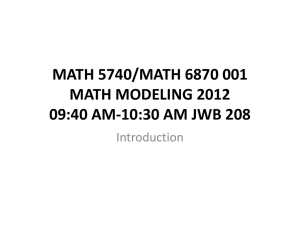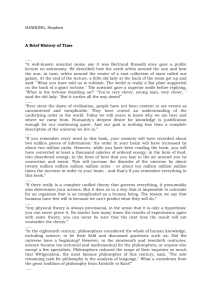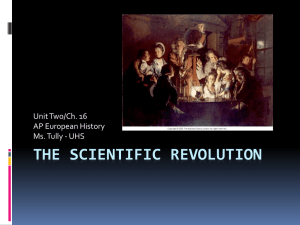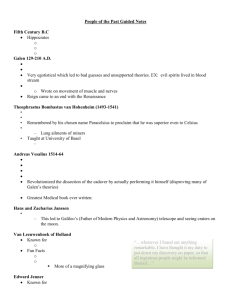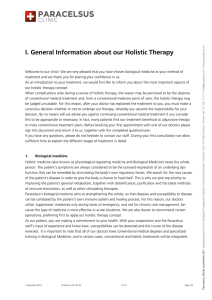Scientific Changes PPT
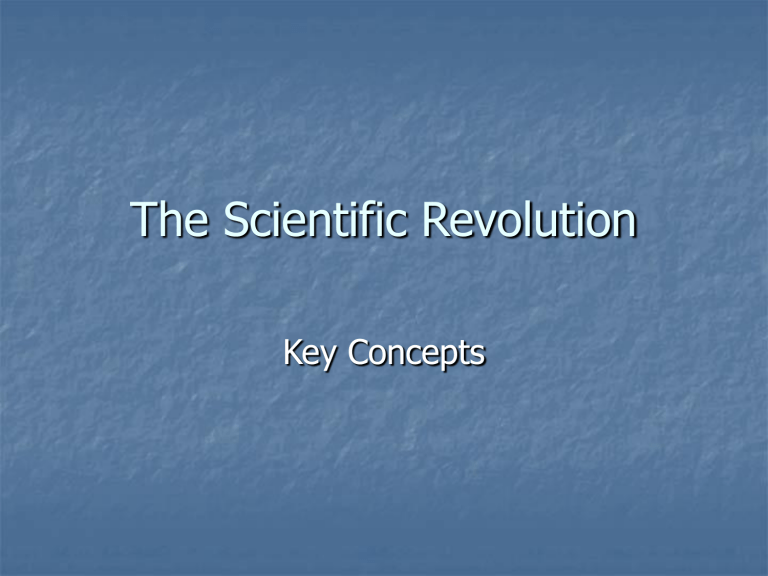
The Scientific Revolution
Key Concepts
Discoveries in Biology and Anatomy
Just as astronomers moved away from the works of ancient Greeks, other scientists used the scientific method to acquire new knowledge and make great discoveries in the fields of Biology and Anatomy.
Biology
• European Middle
Ages doctors relied on Greek, Galen
Vesalius
• Used bodies of executed criminals for dissection
William
Harvey
• Galen’s works inaccurate
• Flemish doctor
Andreas Vesalius became known for work in anatomy
• Hired artists to produce accurate drawings
• On the Workings of
the Human Body,
1543
• English physician, early 1600s
• Observed, explained workings of human heart
• Described blood, circulatory system functions
Paracelsus (1493-1541)
Rejected the work of both
Aristotle and Galen
Replace the traditional system with a new chemical philosophy based upon a new understanding of nature derived from fresh observation
& experiment
Believed disease was caused by chemical imbalance in the organs which could be solved by chemical remedies
Although chemical remedies had been used, Paracelsus and his followers differed by giving careful attention to the proper dosages of their chemically prepared metals & materials
•
•
•
•
•
•
Paracelsus: Genius with bad press agent
Attended Universities of Heidelberg, Freiburg, Ingolstadt,
Cologne, Tübingen, Vienna, Erfurt and Ferrara, left without degree, drank to excess, and wandered over most of known world, took part in the Peasants War (1525)
Investigated the use of opium, coined the term laudanum for tincture of opium, an opium extract containing 40-80% ethanol.
Pioneered use of chemicals, elements in medicine
Introduced draining to replace amputation or cauterization
Introduced dose-response concept
Paracelsus is one of the people featured on a Chocolate Frog card in Harry Potter. A bust of Paracelsus is in the castle at
Hogwarts, near Gryffindor, between the entrance to the
Gryffindor common room and the Owlry, as mentioned in
Order of the Phoenix
A. Copernicus (1473-1543)
Aim to glorify God
Sun-centered universe
Challenged circular orbits
Universe of staggering size
Earth no different than any other planet
On the Revolutions of the
Heavenly Spheres (1543)
B. Tycho Brahe (1546-1601)
Most sophisticated observatory of his day
Arrogant nobleman
Remained an
Aristotelian
Discovered comet shooting right through crystalline spheres
C. Johannes Kepler (1571-1630)
Student of Brahe
Planetary motion conforms to mathematical formula
Elliptical orbits
Planets do not move at uniform speeds in their orbits
D. Galileo Galilei (1564-1642)
Early practitioner of the experimental method
Mathematical formula for acceleration of falling objects
Law of inertia
His discoveries using the telescope
Challenges categories of
“form” and “matter”
End of his life
E. Isaac Newton (1642-1727)
Newton far from the perfect rationalist
A great synthesizer
Blends inductive and deductive methods
Argues for a universe governed by natural laws
Principia; Mathematical
Principles of Natural
Philosophy (1687)
F. Francis Bacon (1561-1626)
Father of the
Scientific Revolution
The Inductive Method
Emphasis on practical, useful knowledge
New attitude toward nature
G. Rene Descartes (1596-1650)
Significance of Doubt
The Deductive
Method
Spatial relationships can be expressed in mathematical formulas
Father of “analytical geometry”
III. Causes of the Scientific
Revolution
Medieval Intellectual Life and Medieval Universities
The Italian Renaissance
Renewed emphasis on mathematics
Renaissance system of patronage
Navigational problems of long sea voyages
Better scientific instruments
IV. Consequences of the Scientific
Revolution
Rise of the “Scientific
Community”
--Royal Society of London
(1662)
--Academy of Royal
Sciences (1666)
The modern scientific method
A universe ordered according to natural laws
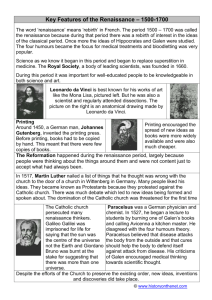

![Galilei, Galileo (1564 - 1642) [The universe] cannot be read until we](http://s2.studylib.net/store/data/005476024_1-9df318dde86b612540035c06a638f94c-300x300.png)
